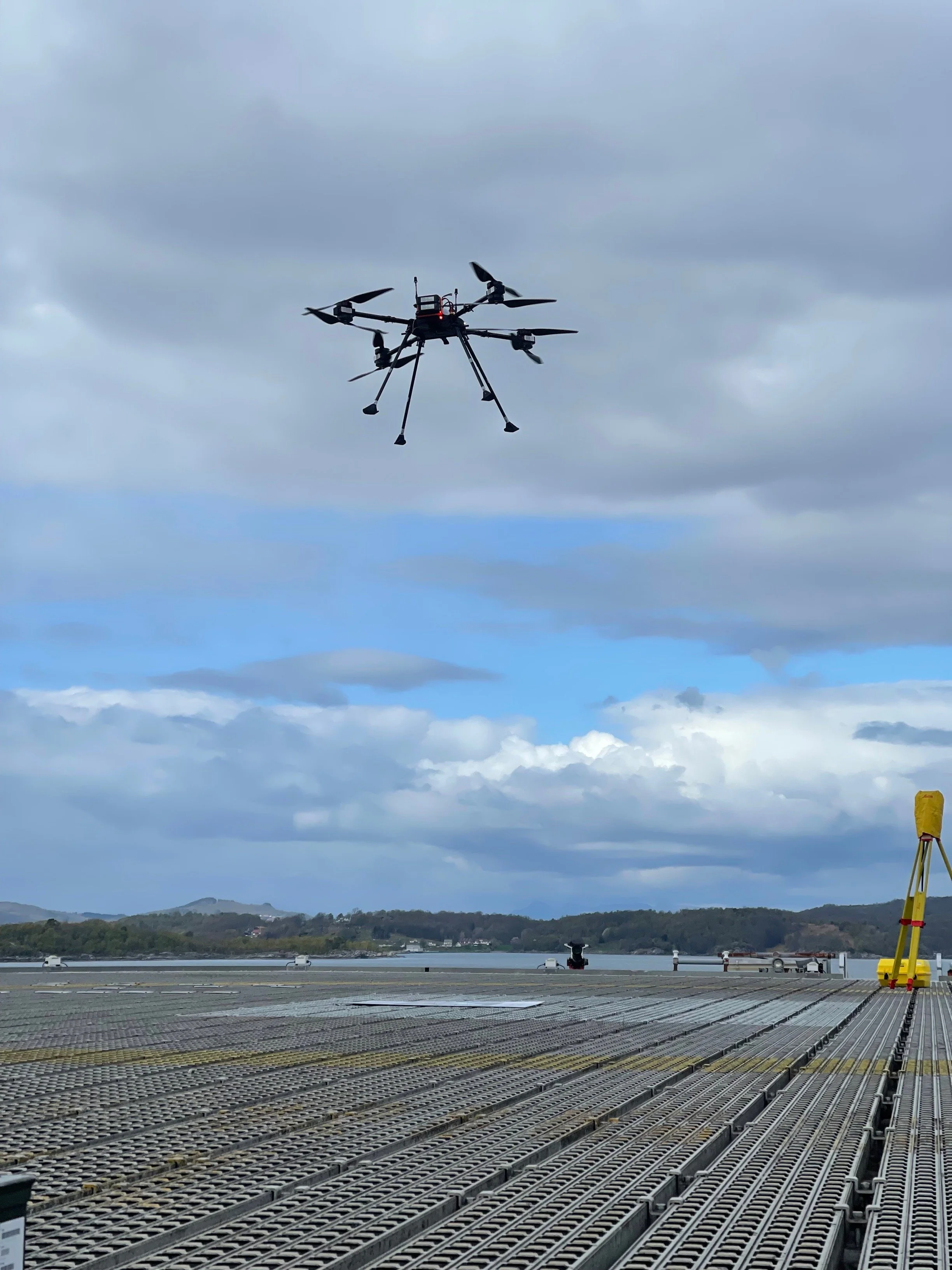CASE STUDIES> SHORE-TO-SHIP> NORDIC UNMANNED
Case Study: Streamlined Offshore Logistics Deliveries with the Rapid Delivery System
Nordic Unmanned Tests World’s First On-Demand Logistics Delivers to Offshore Platforms
Customer: Nordic Unmanned
Background
Since its founding in 2014, Nordic Unmanned has quickly become one of Europe’s leading providers of drone systems and services. With offices spanning Norway, Belgium, Denmark, the United Kingdom and Germany, the company services an array of clientele with services ranging from infrastructure inspections, to emissions monitoring, to coastal surveillance. In 2021, Nordic Unmanned became the first European operator to secure an EASA LUC (Light UAS Operator Certificate) which enabled it to self-approve many drone operations over unpopulated areas, including beyond line of sight (BVLOS) missions. Leveraging its expertise in long distance missions and unique operations capabilities, Nordic Unmanned was recently tapped by a leading energy company, to streamline its offshore logistics operations delivering spare parts, samples and other materials between its North Sea installations.
Customer Needs
Though offshore oil platforms are massive structures, storage space on the installations is still very limited. Spare parts are often spread across multiple offshore platforms, or at shore facilities. The implications of operational interruptions to these offshore operations are so vast that replacement parts must be received very quickly. With the installations kilometers apart, slow moving vessels can take hours to deliver a mission critical replacement part from one installation to another. Complicating the replenishment of these spare parts, special permits are required for a vessel to approach an offshore installation to pick up and deliver.
To mitigate the costly downtime, Nordic Unmanned is working with the client to streamline delivery of these spare parts leveraging a purpose-built octocopter to quickly transport payloads between offshore platforms. To avoid the resource-consuming permitting needed for vessels to approach the installations, Nordic Unmanned will also be completing the last-mile deliveries from the support vessels to the platforms.
To make these deliveries possible, Nordic Unmanned realized it required a tethered delivery mechanism capable of accurately lowering its payloads to the cluttered deck of an offshore installation buffeted by rough seas. It also needed the capability to deliver payloads from altitude to keep personnel on the platforms safe from spinning propellers. Additionally, unmanned drop off capability, which required no personnel to receive the drone payload, was needed to allow them to confine the delivery operations to the dedicated flight team.
With its in-house engineers beginning to develop its own tethered delivery system, Nordic Unmanned quickly realized that there were a lot of intricacies that went into creating such a piece of hardware. With critical on-shore viability testing approaching, Nordic reached out to A2Z Drone Delivery to test its Rapid Delivery System.
Solution
For the current trials, Nordic Unmanned is testing with the A2Z Drone Delivery first-generation RDS1 tethered delivery system. The Nordic Unmanned drone is equipped with two RDS1 tethered delivery systems, which enables multipoint deliveries in the same flight. This is of particular importance, in order to optimize utilization of the drones. In its testing, Nordic Unmanned realized the RDS1, designed for residential parcel deliveries, required some upgrades to be a truly efficient system for these groundbreaking offshore missions.
“We were going to make some modifications to the RDS1, then A2Z beat us to it with the upgrades included in the new RDS2,” said Steffan Lindsø, CTO for Nordic Unmanned. “We have been really impressed with the first-generation winch and we are super excited to be beta testers for the RDS2 system in parallel with our ongoing offshore testing with the first gen winch. Hopefully the RDS2 will be the perfect upgrade for the next phase.”
The new second generation RDS2 was the perfect solution to Nordic Unmanned’s unique mission parameters. Capable of lowering and retrieving payloads up to 10kg the new Rapid Delivery System could easily deliver most of the spare parts, samples, and other payloads anticipated for this mission. The evolution of the RDS2's form factor also expanded the effective cargo bay to accommodate the larger payloads the mission required.
While tethered delivery is the ideal solution for Nordic to deposit and retrieve payloads from offshore platforms and support vessels churning in the North Sea, sometimes heavy offshore winds can complicate tethered delivery. So, Nordic leveraged the modular nature of the RDS1 to create a backup option which prevents logistics interrupts in high wind events.
“Obviously, offshore installations are sometimes buffeted by heavy winds. So, we have two measures for offshore delivery, the RDS1 winch and a removable payload box. Tethered delivery is preferred because it reduces ground risk, but a payload attached to the end of the tether in heavy offshore winds can be complicated by the tight spaces on these installations. So, for these extreme conditions we can quick-swap to a cargo box as backup. Because the RDS1 is an entirely self-contained unit, we are able to swap the tether for the payload box very quickly,” said Lindsø.
Results
Nordic Unmanned recently completed its on-shore validation testing of the combined drone logistics system. Company engineers fabricated test platforms to simulate the extremes of offshore landing zones to demonstrate the viability of UAV to support offshore logistics. The drone is equipped with machine vision to identify and lock on to moving targets for cargo deployment from the tethered delivery system or for landing the drone safely.
The next phase of the project, a three-week test, will see Nordic Unmanned conduct multiple daily flights between installations and from installations to vessels.
“Part of the challenge with this operation is we do not know what the client will need to deliver from shore to ship to installation, so we need to be prepared for any payload at any time. Combining the RDS1 with our purpose-built flight platform provides the maximum flexibility for these operations,” said Lindsø.
Once fully implemented, these drone-based offshore logistics operations will significantly improve the efficiency of operations helping to mitigate downtime for the offshore installations, while also reducing emissions and leading the industry towards a more sustainable future.




